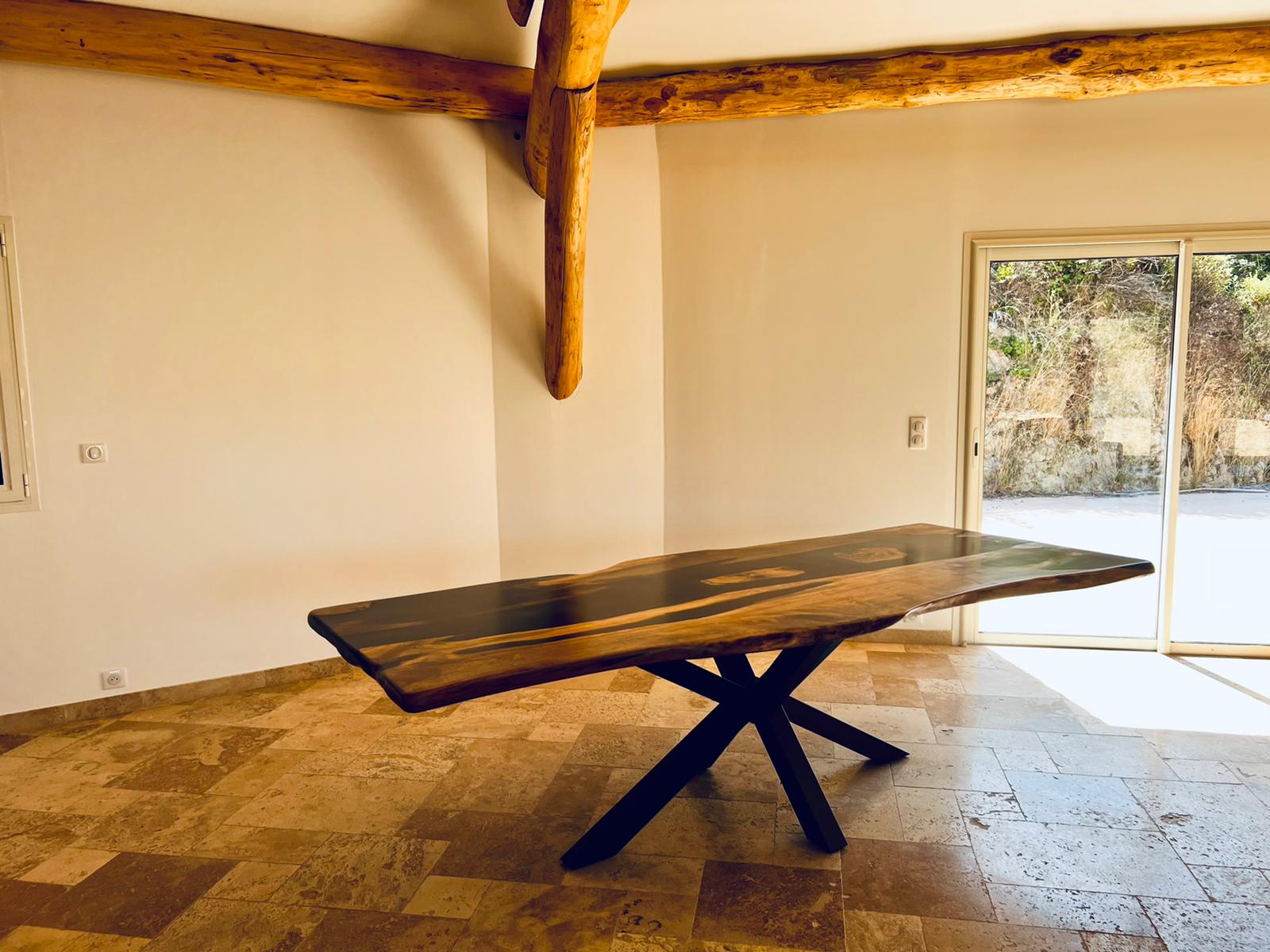What Are The Different Epoxy Table Legs That Can Be Used?
Table legs are one of the most crucial aspects of table building. When choosing the right epoxy table legs, it is important to know their dimensions and durability.
Furthermore, the weight and proportions of the table are critical for making the decision to select table legs. The legs come in a variety of styles that are tailored to the customer’s preferences.
Different Epoxy Table Legs
Everything begins with the tabletop, which is where the table’s legs are joined. The two most common materials used for table legs are wood and metal. Wood or metal legs can be used depending on how much weight you need to hold.
The more significant consideration when selecting leg materials is aesthetics. It is important to consider the style you want in your home. If you like something that mixes in with its surroundings, go with wood. However, if you want a more sleek style, go with stainless steel.
Metal Table Legs
When buying metal table legs, pick what diameter to create and paint according to your preference based on the weight, size, and diameter of the table.
Epoxy table legs come in different sizes ranging from 30 cm by 40 cm to a standard diameter of 40 by 60 cm. The most crucial factor to consider when choosing the best metal table legs for your project is the type of table you want to build.
With such a large selection of metal legs to pick from, we recommend looking for design inspiration on Instagram or Pinterest before selecting your metal legs.
Metal legs may be readily affixed to various table surfaces. Attaching these legs does not take a lot of time.
Wooden Table Leg
The hardwood table leg has the same diameter and dimensions as the table and can be painted as well as shaped and beautified.
When selecting a table leg type, keep in mind how much weight the legs will have to sustain. If you want to build a table with a hefty top, it may be time to upgrade to our larger duty style legs.
Wooden legs are timeless and come in a range of styles and wood kinds. To install these legs, you will need basic woodworking abilities.
Light vs. Heavy-Duty Legs
Light Duty Legs
Light-duty legs include hairpin-type legs, which are intended for use on thinner table tops or smaller projects that do not require the strength of heavy-duty legs. Furthermore, these tables are quite adaptable and work well with a wide range of design styles.
Heavy-Duty Legs
Heavy-duty legs are made up of thick gauge steel, and their purpose is to withstand the weight of heavy table tops made of concrete, glass, quartz, or wood.
These legs are designed to last for a long time and are suitable for use with benches, coffee tables, conference tables, and dining tables.
Heavy-duty legs are often composed of rectangular tubing or square tubing. Furthermore, it may support up to 200 pounds per leg, depending on the type.

How To Select The Right Table Legs
For lovers of contemporary, eclectic, minimalist, industrial style, or even transitional furniture, the epoxy tables might be the perfect addition to your home.
Each of these tables is handcrafted by a professional craftsman who understands how to bring out the finest in natural wood. The artisan manufacturers also know how to combine the right colors in epoxy to create a nearly surreal flash of color.
These tables can be created from a pair of slabs or different sizes of wood. The stunning but pleasant intricacies of the wood are complemented by the smooth water-colored epoxy resin.
When choosing the table legs, the first step is to select the perfect kind of furniture for your project may be a highly gratifying process. The second step is to determine the optimal leg height of what you are producing.
Furthermore, the thickness of your tabletop will contribute to the overall height of the table, so keep that in mind as well. The most typical error when choosing a leg is underestimating its thickness. Take measurements before placing your purchase.
The last step is to determine the thickness of the leg. Keep in mind that the visual weight of your furniture is a significant concern. Small tops go well with less thick legs and vice versa. Another factor to consider is the size of your tabletop.
It all comes down to what you find visually appealing and what best complements your existing furniture styles.
How To Attach Epoxy Table Legs?
While most furniture companies sell pre-designed tables, others offer consumers to make their own by selecting the table’s top and the type of table legs.
It is not difficult to attach legs to an epoxy table. It only takes a little preparation for the procedure before you begin. The first step is to ensure that your top has beveled edges so that the mold fits exactly on it without any gaps between them.
On the other hand, you may treat your wood with sanding sealer coats to reduce scratches and also further protect against moisture damage.
The next step is to remove them again before gluing your table legs with epoxy resin. Make sure you have plenty since after they are linked, you will not be able to move them around easily.
Additionally, you can use mail or screws for added security. However, make sure they do not poke through either side of your leg pieces.
The nails and screws will need to be sanded down slightly afterward until both sides are flush against each other and not protruding out from behind or underneath where anyone could be hurt later on.
Conclusion
You may not have realized there are different table leg kinds and styles. Table legs do more than simply support the tabletop; they can blend in to showcase the table or draw as much attention as the design of the tabletop.
When selecting epoxy table legs, keep in mind how much weight the legs will have to sustain. Most regular heavy-duty table legs can support up to 200 pounds per leg.

Allen Chen
Passionate about woodwork, I started Epoxyism to display my latest creations and make them available to people seeking out unique tables and epoxy products.
